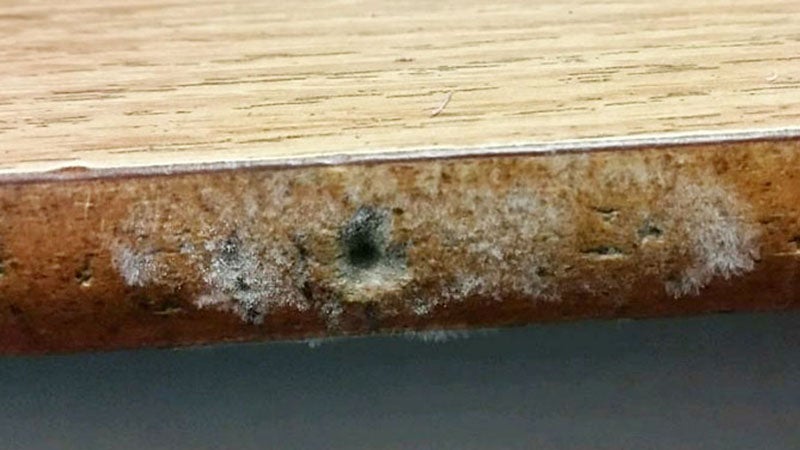REPORT: Mold levels at Rosemont decreased significantly after clean up effort
Published 6:56 pm Wednesday, October 18, 2017

- Mold is shown on a desk at Rosemont Elementary School. --Contributed
The results are in and parents and students at Rosemont Elementary School can breathe a sigh of relief — literally.
Test results at Rosemont Elementary School from Oct. 15 “did not indicate an elevation in airborne mold inside those areas tested, at the time of sampling,” according to a report from Culpepper Group, Inc., a third-party hygiene and indoor air quality consultant.
“Today, the TCSS received the air sample analysis results from our third-party vendor, The Culpepper Group. Testing results indicate that following the remediation process of cleaning, using engineering controls, and structural drying inside of Rosemont, there is not an elevation of airborne mold,” said Yolanda Stephen, Director of Public Relations. “Later this week, we will be meeting with an engineer to discuss permanent solutions to keeping the air dry and we will continue monitoring humidity levels within the building.”
The report’s executive summary said that samples collected Oct. 11 in room 104, 107, 111, 112A, 119, 120, 121, 122, 123, 202, 206, 304, 307, 308 and 310 showed “an elevation in airborne mold or sample anomaly.” On Oct. 11, there were a total of 40 samples taken inside the school and two outside the building.
The report said that analysis for air samples collected inside the remainder of the school did not indicate an elevation in airborne mold.
Four days later, on Oct. 15, new samples were collected after what the report describes as “remedial cleaning using engineering controls and structural drying inside the school.” The second set of results did not show an elevation in airborne mold inside any classroom, the report says. A total of 15 air samples were taken inside the school that day and one air sample was collected outside the building, the report says.
Culpepper Group, Inc. used Allergenco-D spore traps with Buck BioAire pumps calibrated at 15 liters per minute to collect the air samples.
The samples were submitted to Professional Laboratories, Inc. and AES Analytical for analysis. The report said the reason for using two laboratories was to “ensure expedited results.”
Culpepper Group’s conclusion says “the owner will need to maintain the humidity inside the building below 50 percent during the cooling season to help prevent mold growth and in particular surface mold growth.”
In the original test — which was Oct. 11 — 15 classrooms showed an elevation in airborne mold. Those classrooms showed anywhere from 47 spores to 175 — and from 2,491 to 7,102 per cubic meter. The highest readings, according to Analytical Environmental Services, were in rooms 122 (175 spores), room 122 (100), 107 (100), 104 (82) and 121 (77).
As expected, the highest ratings were for aspergillus/penicillium, a common form of indoor mold. Basidiomycetes, which includes rusts, yeasts and mushrooms, was also prevalent in some of the rooms in the original tests.
However, after the school’s cleaning efforts and using dehumidifiers in the rooms, all of those numbers dropped significantly.
Every classroom, including those that tested high originally, dropped below 10 raw spores measured and below 477 per cubic meter.
According to the United States Environmental Protection Agency, there are no federal standards for airborne concentrations of mold, or mold spores.
The EPA website says “It is impossible to eliminate all mold and mold spores in the indoor environment.”



